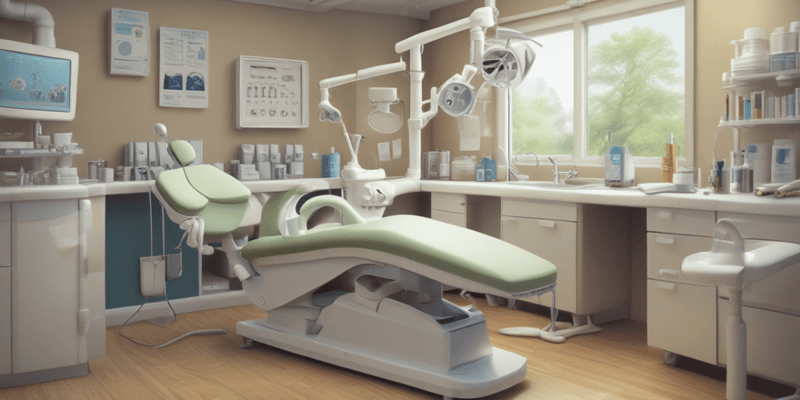Podcast
Questions and Answers
What is the maximum safe dose of lidocaine?
What is the maximum safe dose of lidocaine?
Which local anaesthetic has a pKa of 7.7 and is used for infiltration and nerve block?
Which local anaesthetic has a pKa of 7.7 and is used for infiltration and nerve block?
What is the duration of action of articaine with adrenaline?
What is the duration of action of articaine with adrenaline?
Which local anaesthetic can cause methamoglobinaemia in high doses?
Which local anaesthetic can cause methamoglobinaemia in high doses?
Signup and view all the answers
What is the concentration of prilocaine in CitanestTM?
What is the concentration of prilocaine in CitanestTM?
Signup and view all the answers
Which local anaesthetic has a slow onset and is used for epidurals?
Which local anaesthetic has a slow onset and is used for epidurals?
Signup and view all the answers
What is the complication of high doses of bupivacaine?
What is the complication of high doses of bupivacaine?
Signup and view all the answers
What is the pKa of articaine?
What is the pKa of articaine?
Signup and view all the answers
Which local anaesthetic is not commonly used in dentistry?
Which local anaesthetic is not commonly used in dentistry?
Signup and view all the answers
What is the composition of EMLA cream?
What is the composition of EMLA cream?
Signup and view all the answers
Study Notes
Importance of Pain Management
- Pain is an unpleasant sensory and emotional experience associated with actual or potential tissue damage
- Effective control of orofacial pain facilitates the delivery of care and reduces anxiety about dentistry
Introduction to Local Anaesthetics
- Local anaesthetics are drugs that reversibly prevent the transmission of nerve impulses in the region to which they are applied, without affecting consciousness
- They prevent or relieve pain and interrupt nerve conduction by inhibiting the influx of sodium (Na+) ions through voltage-gated Na+ channels within nerve membranes
- Their effectiveness depends on lipid solubility and local pH
History of Local Anaesthetics
- The first local anaesthetic to be used was cocaine, but it was addictive and had psychogenic effects
- Procaine (novocaine) is no longer used, as more effective alternatives are available
Classification of Local Anaesthetics
- Local anaesthetics can be classified as amide-linked or ester-linked
- Examples of amide-linked local anaesthetics include lidocaine, prilocaine, articaine, and bupivacaine
Mechanism of Action
- Local anaesthetics work by preventing the transmission of nerve impulses by inhibiting the influx of sodium (Na+) ions through voltage-gated Na+ channels within nerve membranes
- The lipid-soluble base form of the anaesthetic penetrates the nerve membrane, where it is converted to the ionized form, which binds to the inactivation site of the Na+ channel, keeping the channel closed
- The pKa value of the anaesthetic determines the proportion of the ionized and non-ionized forms, which affects its potency and duration of action
Nociceptors
- Nociceptors are sensory receptors responsible for the detection of noxious stimuli, transforming them into electrical signals that are conducted to the CNS
- They are distributed throughout the body, including the skin, muscles, and joints, and can be stimulated by mechanical, thermal, or chemical stimuli
Studying That Suits You
Use AI to generate personalized quizzes and flashcards to suit your learning preferences.
Related Documents
Description
Test your knowledge on the importance of pain management, action potential and pain pathways, and the composition and mechanisms of local anaesthetics in dental practice. Learn about the role of additives and clinical parameters for effective local anaesthesia.





